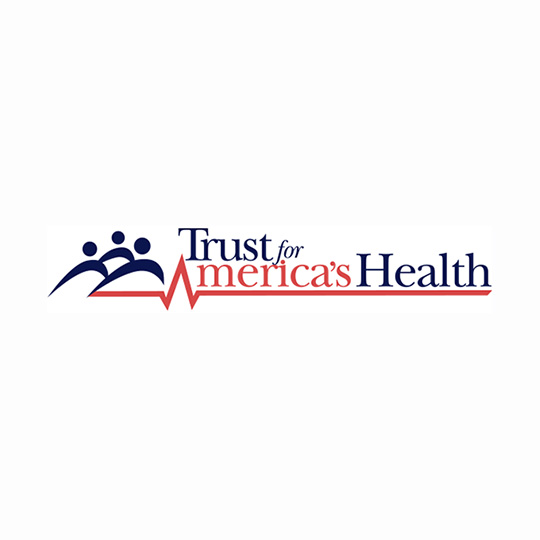A strong public health system serves as a cornerstone of well-being and prosperity for the nation and the world. The foundation of such a system includes a focus on evidence-based interventions, an emphasis on prevention and health equity, and, critically, adequate and predictable funding. Unfortunately, for over two decades, the country’s public health system has not received the level of funding needed to ensure it meets the nation’s public health needs.
Investing in prevention saves lives. The U.S. public health system has produced many innovations and best practices. Vaccinations stand at the forefront, representing some of the most significant breakthroughs in public health history. The development and implementation of vaccines against deadly infectious diseases, such as smallpox, polio, and measles, have saved countless lives and dramatically reduced the burden of disease. Most recently, it is estimated that the COVID-19 vaccine prevented more than 2.2 million deaths in the United States.
Additional public health victories include the Clean Air Act of 1963 and the Safe Drinking Water Act of 1974, which have led to significant reductions in air and water pollution respectively.2,3 In addition, an ongoing campaign against tobacco use has resulted in large declines in smoking rates and reduced the prevalence of lung cancer, heart disease, and other tobacco-related illnesses.
Nutrition and healthy lifestyles have been the focus of numerous public health initiatives. Programs such as the Supplemental Nutrition Assistance Program and the Special Supplemental Nutrition Program for Women, Infants, and Children help ensure economically disadvantaged families have access to nutritious food, fostering nutrition security. Furthermore, public health campaigns promoting physical activity have raised awareness about the importance of physical activity in helping to prevent chronic diseases like obesity, diabetes, and heart disease.
None of these life-saving advances would have been possible without sustained investment in science and public health. But decades of underfunding the public health system have made it challenging to protect the public’s health, a fact starkly illuminated by the COVID-19 pandemic. The COVID-19 crisis highlighted the need for robust investment in public health infrastructure, research, surveillance, and rapid-response capabilities to better prepare for and mitigate the impact of future public health emergencies.
Additionally, the United States faces a growing burden of chronic diseases, such as obesity, diabetes, and heart disease, which are closely tied to social determinants of health and the impact of health inequities. While public health initiatives have made some strides in promoting access to healthy lifestyles, the lack of consistent and sufficient funding hinders the system’s ability to develop and sustain comprehensive programs that address the complex interplay of factors contributing to chronic diseases.
Behavioral health is another area in which funding does not match need, with issues like depression, suicide, and substance use disorders affecting millions of Americans.
Finally, health disparities, particularly among marginalized and underserved communities, remain a significant challenge. Public health efforts to promote health equity have been hampered by a lack of resources, as the underfunding of public health disproportionately impacts low-income communities, rural communities, and communities of color.
Investing in public health saves lives and dollars
Investing in public health has consistently proven to yield high returns, further underscoring the importance of robust funding. For every dollar spent on preventive measures and public health programs, the potential savings in healthcare costs and economic productivity can be substantial.6 This high return stems from the fact that public health initiatives often target the root causes of health issues, preventing the development of costly chronic conditions and reducing the demand for more expensive medical treatments. Moreover, these investments contribute to a healthier workforce, which in turn leads to increased productivity and a more robust economy. By recognizing the high return of public health investments and allocating resources accordingly, policymakers can promote the long-term health and prosperity of the nation, ultimately creating a more resilient and equitable society.
Many health departments face a funding cliff as pandemic response funding ends
Over the past three years, health agencies have faced a dichotomy in their funding. Although there have been significant increases in short term funding, these generally took the form of one-time COVID-19-specific appropriations. Such one-time and specific funding has resulted in two current realities: (1) a boom-and-bust cycle, i.e., large funding infusions in response to the pandemic, funding for programs that will now have to shutter as their funding ends; and (2) a situation in which many long-standing deficiencies remain unaddressed as state and local health departments could not use pandemic response funding to address other public health programming and infrastructure needs. The pattern of only investing in public health during emergencies was in part the cause of the inadequate response to COVID-19, and if repeated, will lead to inadequate responses to future public health emergencies. Another critical lesson of the COVID19 pandemic is that emergency appropriations arrive too late to bolster preparedness and prevention efforts. To tackle threats akin to COVID-19, the nation must maintain higher funding levels on a year-to-year basis and invest in planning, workforce, and infrastructure long before a crisis arises. Neglecting to do so is tantamount to recruiting firefighters and procuring hoses and protective equipment while a wildfire is burning.

